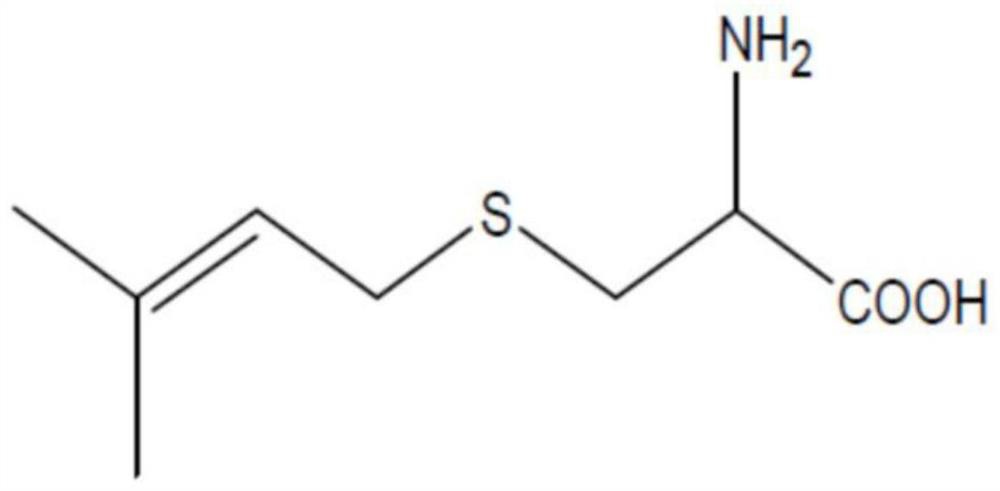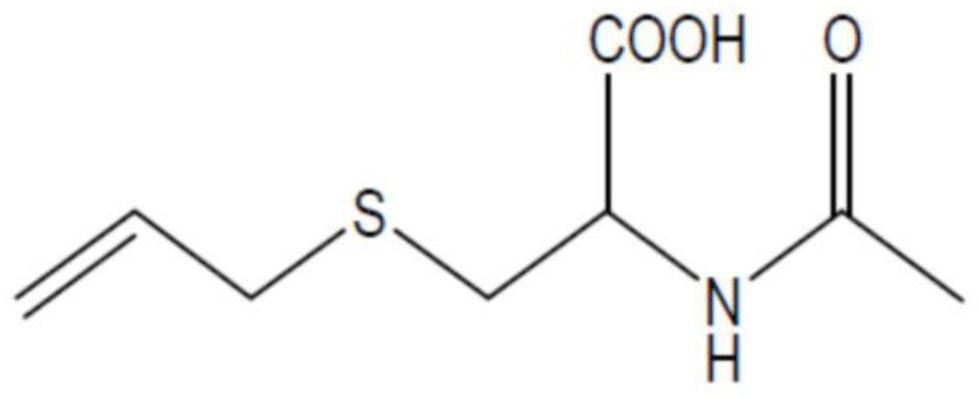Application of cysteine derivatives as radiation protective agent
A radioprotectant, cysteine technology, applied in the field of cysteine derivatives, can solve problems such as severe cytotoxicity and insufficient effect, and achieve safety and effectiveness guarantee, stable storage, and easy availability of raw materials. Effect
- Summary
- Abstract
- Description
- Claims
- Application Information
AI Technical Summary
Problems solved by technology
Method used
Image
Examples
Embodiment 1
[0047] SC-1, the synthesis of 2-acetylamino-3-allylmercaptopropionic acid:
[0048] Add 10mmol of N-acetyl-L-cysteine to a 100ml reaction bottle, and use 3mol / LNH 4 After dissolving in 25ml OH, use saturated Na 2 CO 3 Cool in an ice-salt bath to below 3°C, add 15 mmol of allyl bromide dropwise under vigorous stirring, maintain the reaction temperature and continue the reaction for 4 hours. After the reaction is completed, evaporate the solvent to dryness under reduced pressure with a rotary evaporator to obtain a white solid. Wash with ethyl acetate and filter. The obtained crude product was recrystallized with absolute ethanol / petroleum ether (60-90° C.) to obtain white flocculent crystals with a yield of 83.6%. mp 120-123°C. MS: Calculated [C8H13NO3S+H]+: 204.0689, Tested [C8H13NO3S+H]+: 204.0683.
Embodiment 2
[0050] SC-2, the synthesis of 2-amino-3-(3-methylbut-2-enylmercapto)propionic acid:
[0051] Add 10mmol of L-cysteine to a 100ml reaction bottle, and add 3mol / LNH 4 After dissolving in 25ml OH, use saturated Na 2 CO 3 After cooling in an ice-salt bath to below 3°C, 15 mmol of bromoisoamylene was added dropwise with vigorous stirring, and the reaction was continued for 4 h while maintaining the reaction temperature. After the reaction, the solvent was evaporated to dryness under reduced pressure (2 O was recrystallized to obtain white flaky crystals with a yield of 85.6%. mp 190-193°C. MS: Calculated [C8H15NO2S+H]+: 190.0896, Tested [C8H15NO2S+H]+: 190.0900.
PUM
 Login to View More
Login to View More Abstract
Description
Claims
Application Information
 Login to View More
Login to View More - R&D Engineer
- R&D Manager
- IP Professional
- Industry Leading Data Capabilities
- Powerful AI technology
- Patent DNA Extraction
Browse by: Latest US Patents, China's latest patents, Technical Efficacy Thesaurus, Application Domain, Technology Topic, Popular Technical Reports.
© 2024 PatSnap. All rights reserved.Legal|Privacy policy|Modern Slavery Act Transparency Statement|Sitemap|About US| Contact US: help@patsnap.com










